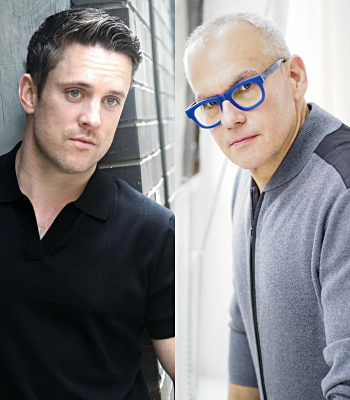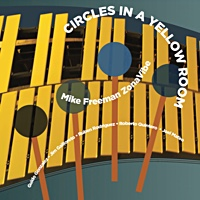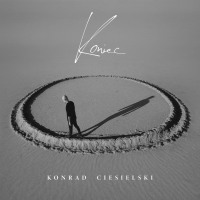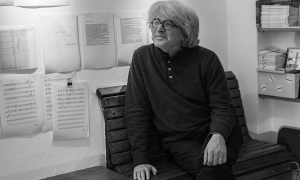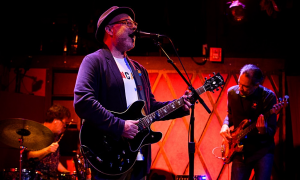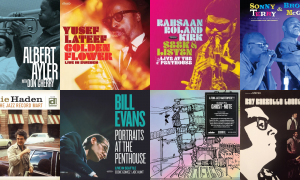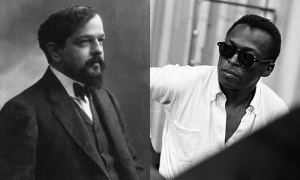Home » Jazz Articles » Interview » Don Was: The Music Is Paramount
Don Was: The Music Is Paramount

Growth and revolution are the purest outcome of the jazz experience
—Don Was
Don Was, co-leader of the 1980s group Was (Not Was) and producer of every Rolling Stones album since 1993, took the baton from Bruce Lundvall in 2012, the latter having spearheaded the revival of the label in 1985. They walk in the footsteps of the fabled Alfred Lion, an immigrant who founded the label in 1939 and steered it into a special place in American music and culture. Lion was ably assisted by Francis Wolff, also an immigrant, who blended his extraordinary photography skills with his producing activities.
The place that Blue Note carved out by the 1950s and 1960s is revered by musicians—both those fortunate enough to have recorded for the label, and younger musicians inspired by those recordings.
"I think they were radical records," said Was, who was a teenager in the '60s when he discovered the vinyl with the smoldering photos by Wolff and the cover design of Reid Miles that often drew eyes to the product before ears. "Even if it was something inside, like Jimmy Smith. What Jimmy Smith was doing on the organ, it was radical. Never mind Unit Structures by Cecil Taylor (1966) or Ornette Coleman At the "Golden Circle" Stockholm (1965), which is actually one of the first Blue Note records I ever got. It was radical, but they were so good about the total package. The playing, the writing, but also the way Rudy [Van Gelder, engineer] recorded the music. The way Reid Miles designed the package and Francis Wolff's photographs. It had quality, ya know? It was one of those few labels you could just drop the needle down and wherever it landed ...You may not know who the leader was on the session, but you recognized it was a Blue Note album and you could probably pick out players from the repertory company."
Was looked at with wonder, like it was sterling silver and not cardboard. Wolff's artful photos of musicians in action, but the backgrounds dark and mysterious. "You can't see the walls. You don't know what kind of space these guys are in. There's cigarette smoke everywhere. They're dressed really cool. Holding a saxophone. I wanted to be like them. I wanted to be one of them. It had incredible allure. Not just music to listen to, but as a lifestyle. That's what it meant to me then," says Was, now 61.
Now that he's filling big shoes, the Blue Note brand "means the same thing, except I feel a responsibility to maintain that. That's the only real difference. To this day, when I put on Speak No Evil [Wayne Shorter, 1965]. From my teenage years, that's always been the music I went to when I lost myself or lost my way or was just feeling blue. When I put that record on, I was in touch with myself and my feelings by the time the side was over, which was about 15 minutes or so. I want it to still be a record company that brings that kind of relief to people," he says in earnest. "I want the music to be released to mean something. Not just there because someone has an idea. We try to have every record, hopefully, get under somebody's skin and become part of the fabric of their lives."
To that end, Was seeks musicians with something to say. He's not trying to get the same groove, musically, that Lion and company were so successful at. He seeks the same impact. A peek at something different. Music of today, and maybe a glimpse of the future. Something that can elicit emotion.
"There was a moment in time where, if you put on the first Jazz Messengers album, the one with both Horace Silver and Art Blakey, you hear Horace Silver throwing in funky church stuff on piano. Art Blakey's playing back beat. You'd have gotten kicked off the band stand at Minton's [famed Harlem night spot where early bebop was hatched] for doing that. If you listen to it now, it sounds very mainstream and conservative. But it was a radical album when it was made and it was pushing the boundaries," says Was. "As a musician who played improvisational music night after night for years, I live at the first rule of improvisational music: don't play the same thing twice. You should always be pushing the boundaries."
Was, born Don Fagenson, played jazz during his time in college and at gigs around Detroit into his 30s. His first breakout, though, was when he formed a group with a buddy, David Weiss. He became Don Was. His partner became David Was and Was (Not Was) was born. It was the 1980s. The group had four albums and forged some funky hits. Eventually, Was turned to producing. (Though he never stopped playing and often contributed on bass or keyboards to albums in which he was producing). Over the years, he has produced projects for an array of heavyweights including Bob Dylan, Bonnie Raitt, Al Green, Joe Cocker, Carly Simon, Ringo Starr, Brian Wilson, Roy Orbison, B.B. King, Willie Nelson, Lyle Lovett, Waylon Jennings, Kurt Elling, Randy Newman and many more. He has received multiple Grammy Awards, including Producer of the Year in 1995.
His outlook toward signing artists to Blue Note, the venerable jazz label, may not coincide with everyone's view.
"Jazz is a very loose term," says Was. "A lot of people don't like it. It means different things to different people. But I think we know kind of the type of music we're talking about when we say this. If we're talking about jazz, even in its broadest sense, the idea is: Do something new every time. That's built into the DNA of jazz. Don't play the same thing twice. So, growth and revolution are the purest outcome of the jazz experience. It should always be changing."
Was is respectful, reverential, about following in the footsteps of Lundvall, he's making his own mark on Blue Note, according to his own inner voice and feel for music, his lifelong pursuit.
"Bruce is a real hero to me. He's probably the only record executive out there who goes back to the '60s with the big labels, who is universally beloved. [chuckles] I've never heard anyone say an unkind word about Bruce. To stay in big record companies like that for an entire career and not have people pissed off at you, that's an incredible testament to the strength of Bruce's character and his integrity and honesty." Was says he still get frequent notes from Lundvall suggesting musicians he should check out.
But running a label, Was discovered, isn't just waiving a magic wand and producing good music. "That was actually the most shocking thing, to me, coming into a record company. You can do maybe 1 percent of all the things you want to do. You can actually manifest one percent of your ideas. If you were playing baseball and batting .010 you wouldn't last very long," he says with a knowing laugh. Nonetheless, Blue Note is forging ahead with plenty of product in its anniversary year, and plenty of exposure.
"I'm really happy. This year we probably have a jazz release coming every month, and it's a really wide range of records. From Bobby Hutcherson with Joey DeFrancesco and David Sanborn and Billy Hart; all the way to Chris Dave. It's a wide spectrum. There's something new coming every month. It's not easy to make that happen."
Was is proud of the direction the label is going, even if some of the roster might not be considered "jazz" by the purists, and even if the music might take different twists. "We're just trying to make good things and be creative and innovative. I want it to be the kind of label that it's always been, whereby a 15-year-old musician goes home and practices because one day he wants to be on Blue Note Records. Which is what I did."
There are movements away from the tradition, even if they have come through it. Like much of jazz since its beginnings. Pianist Robert Glasper is creating music with a soul and groove foundation. Closer to Isaac Hayes than Bud Powell. Singer Norah Jones has a sound that bows to the pop world, even as it creates interesting textures. Ambrose Akinmusire plays the trumpet unlike anyone, and has a musical curiosity that has nothing to do with his instrument. Young trumpeter Takuya Kuroda has a melange of rhythms, beats and grooves on his label debut Rising Son.
"I think Robert Glasper is a very pure jazz artist, even on the R&B flavored records he does," states Was. "I've seen him in the studio. Even when it sounds like they're using loops and all that stuff, it's all played live. It's not worked out. It is improvisation. He's picking up the elements of the time that he lives in and reflecting it in the music. That's what all artists are supposed to do. He reflects the moment that he's in. What he's doing in 2014 is as 'jazz' as what Herbie and Wayne were doing in the '60s on Blue Note. They were reflecting the times.
"Like Miles Davisdid. Miles, you could never nail him down. The minute you could pin down what he was doing, he felt compelled to shock everybody and move on to something else. What's shocking today? I don't think Glasper's record is shocking ... What is there about it that's not jazz? It's essentially a trio going into the studio and improvising on the foundation of a song. Where the chords and the modes are quite complex. Even if the cycle is short. There are more chords than 'So What.'"
He says the roster of artists feel compelled to move the music in a positive way. And they do so with different personalities. "The way Glasper does it is completely different than the way Jason Moran does it. Yet the two contemporaries actually went to the same high school. [High School for the Performing and Visual Arts in Houston] But they approach it differently. You listen to Derrick Hodge, he approaches it differently than anybody else, as does Chris Dave, who has an album coming in the summer on Blue Note.
Was has high praise for the Akinmusire album,The Imagined Savior is Far Easier to Paint, due for a March release. "It's incredible, man. When I first took the gig, he was trying to describe what he was hearing in his head, and words failed him. I didn't know what he was talking about. I have tremendous respect for him. I knew he had something in mind, but I really didn't know what in the world he was trying to do. Ultimately, I gave up trying to make him verbalize it ... It was like, 'Just do it. You don't have to describe it.'"
Was adds, "It's a real gamble, but it's the most rewarding part of the gig so far. When you have an artist that you respect and you trust them to come up with something and they deliver something beyond your wildest expectations. I think it's an amazing, brilliant record he created. If you listen to it repeatedly, you start to pick up on the dynamics among all the different musicians ... In terms of the dynamics and the group interplay, it really kind of reinvents it. I love what some of—I don't even want to say some of the younger musicians, because Wayne Shorter is one of the main promulgators of this kind of playing. It's no longer: you take the first solo, I'll take the next solo. It's a group improvisation. They're all working together. No one is stepping out. It reinvents the concept of a group. I think Ambrose has taken that to a whole other level. It's beautiful writing. He's a great player."
Speaking of Shorter, the master returned to Blue Note last year with his acclaimed Without a Net CD.
"It's amazing," says Was. "He's such a hero of mine. I'd met him a couple times. He came in and played on a Rolling Stones record once [Bridges to Babylon, produced by Was in 1997]. But to get to spend a little quality time with him and be able to work on the music with him is incredible."
Later this year, the next Shorter recording will be released. It's a project his quartet did with the Orpheus Chamber Orchestra. But it will also be featured with a book by a famed graphic novelist.
Explains Was, "We wanted to do something special with it. There's a graphic novelist by the name of Randy DuBurke. He did a really great graphic novel of the autobiography of Malcolm X. He lives over in Switzerland. I've been a fan of his work for over a decade now. We put him together with Wayne. Wayne is describing the visions in his head when he's writing and playing this music. He scores imaginary movies, in a way, when he plays. Randy is doing a graphic novel of these visions, to go along with it. The CD is in the book. It'll be a beautiful book. It won't be a comic book. It'll be a really nice thing to have. It will give a whole other dimension to getting inside the music that Wayne creates. It's magnificent. "
"They actually play without a conductor. The manager of the orchestra does something very eye-opening," Shorter told All About Jazz in December. "Everyone has a voice when they rehearse. Everyone has suggestions. They're the new thing ... They're doing new stuff. Not only new stuff. Orpheus, they play everything. But it's their openness ... There's a classic science fiction novel coming out with it. By an artist who used to work with marble and things like that. He's independent now. He lives in Switzerland with his family. I've seen his stuff. He is the guy. Among other people, but he's the guy."
With technology constantly changing, and CD sales down, some say records labels are a thing of the past. Many artists have their own small labels and many produce their own material without giving a record label much thought. Was is acutely aware of the changes in the business. But Blue Note is trying to address the issues and get ahead of the curve. The most important thing is not to sit still; to ignore the words "status quo."
Everything is changing all the time. If you just rely on the methods of doing business that worked in 1983, that worked in 1995, that worked even five years ago, you're going to be in trouble. You have to find new ways to keep up with the audience," Was says.
Was has children who are musicians. "When I talk to them about how they find out about music, it's mainly YouTube and things like that. They listen to jazz constantly, and they turn me on to things they find online. It's imperative that the record labels understand that and start addressing the way people discover music these days. Even people my age. You can't just travel around the country and go to every city and find a jazz station anymore. Sadly. There are only a few fortunate cities where you have a 24-hour jazz station, turning you onto new things. There are new ways that people discover music and it's imperative that people keep up with it.
" People are still selling [concert] tickets. An artist who, ten years ago, might have sold 100,000 records and is now selling 8,000 records, is still selling the same number of tickets. They're probably still selling 100,000 tickets over the course of a year. The people are still there. It's not like they went away," he says. "So it's important record companies learn how to get the information out to people. The gig is really simple: Make great records, and let as many people know about it as possible. That's really what we're supposed to do. When you say it like that, it doesn't sound so hard. But it calls for a lot of imagination these days."
There also needs to be a revenue stream. Art and commerce have always been delicate dance partners.
"Congressman Jeffries out of Brooklyn came to Capitol Tower [the Capitol Records Building in Los Angeles]. He's on the [House of Representatives] Judiciary Committee. We talked about protecting the artist, making sure they have a royalty stream coming back. It requires a certain regulation so that people just can't steal the music. I was trying to explain to him in very simple terms: It's not greed. It's not so Ambrose can go out and buy a Maserati. It's simple. If money doesn't come back in, there's no bread to make the next record. We'll only be able to stream and download for free old music. There's a lot of great old music out there, but I feel a tremendous responsibility to keep making new music and to serve young musicians."
Was said Blue Note now has an app on the music website Spotify that was developed by people within the company. "It was a labor of love. We didn't have the bread to develop it," and it is growing in popularity. Says Was, "The Spotify Apps, they have all the statistics. The average time for most users is three minutes before they leave the app and go back to Spotify. The average engagement time per sitting for the Blue Note app was two and a half hours. What I love about it is you get the same endorphin rush, the same emotional feeling, that you get with 12-inch vinyl albums, turning it around and reading the notes on the back, and reading the personnel. You get that same sense of discovery. It's an app with emotional texture to it. That's very mysterious. I know how to do it in music. I don't know how to do it in an app. I'm very proud of that. "
Speaking of vinyl, Blue Note is still producing it. The label has organized a network of independent record stores that are going to be authorized Blue Note dealers for the vinyl being produced. "We're launching a series of low-cost, but really high quality, re- mastered vinyl ... We're going to be doing five reissues a month, indefinitely, for years," he says. The initiative starts at the end of March.
"That was a very interesting experience, going back and re-mastering our catalog. It's been re-mastered over and over and over again and there are a number of philosophical approaches you can take. They're radically different. We went through and listened to everything. From the initial vinyl pressings, right through to the latest CD master. We blindfold tested. In terms of the feel of the music, the original vinyl felt best," says Was.
"There's something about the original intention of the artist. What did everyone get when they left the studio and said, 'Yeah. This is great.' What did that sound like? What were they hearing? That's really what people should hear. Not the reinterpretation of what they were hearing. It's not for me to editorialize over Kenny Burrell. What was Kenny excited about? What did he want it to sound like? We've done some painstaking work trying to recapture the feel of the initial pressings. But still take advantage of the fact that in the hi-def digital downloads, which you can get on HD tracks, for example, you have a little more transparency now.
"For example, when you go to vinyl, the back of the mix moves in closer. The imaginary room that the musicians are in—that room gets apparently smaller with vinyl," says Was. With modern technology "you're able to keep the back wall, get the transparency. The important thing is to do that without losing the feel of the music that was on the vinyl. It's a delicate thing ... So far, the audiophiles love it and the fans love it. That's a big deal for us, to get that out there properly."
Was said there is also something being readied for iTunes, that he could not yet speak about, but "It's going to be incredible, about halfway through the year."
So Blue Note tries to hang on to its reputation earned in the past, and stay in step with the future. With technology, with distribution and with the music. To Was, in the end it's all about the music.
"I believe that the area of the brain that processes music, neurologists have identified it and feel it's there initially in infants for per-language communication. When you talk to a baby, they don't understand words but they understand tones. A mother coos to her child, 'Ahhh look at the baby.' Those notes. People use those notes in all cultures. Disparate cultures from around the world make the same sound. And intervals have emotional meaning for people. You find those intervals appearing in timeless songs, like 'Amazing Grace.' You coo to a baby with 'Amazing Grace' and it communicates to them.
"By the time you're 12 years old, you shut down 19 out of 20 synapses because we can't operate at that level. The ones you keep open are the ones that you use all the time. Even though we develop language skills, we keep the area of the brain that processes music open. Those synapses stay open. My feeling is it's because conversational language has limitations that fail to convey the full depth of our emotional lives. Art, in particular music, puts us in touch with our feelings and helps us make sense of our lives. That should be the goal of music ... Artists are trying to express themselves to make sense out of their lives. But people listen to music and people participate in art because it helps them feel the same way. That's the goal. That's what you're trying to do if you're producing a record, whether it's a Bonnie Raitt record, a Rolling Stones Record or a Wayne Shorter record. Put people in touch with their feelings. Make them feel something."
To Was, the way that's accomplished with musicians being honest with themselves. "That's at the core of record making. What modes or scales you use are kind of irrelevant. That's different to everybody. And there are plenty of people who know all the modes and scales and don't make you feel anything except, 'Wow, look how many notes that cat can play.' I don't think that's noble incentive for making art, just to show off your technique ... You either feel something or you don't. The categories I use to differentiate it are: It's either generous music or it's selfish music. 'Look how many notes I can play' is selfish music. 'Here's what I feel. Maybe you feel the same way.' That's a very generous stance."
Those are the sentiments of a cat who is deep into music, its power and its possibilities. Was is no bean counter, which in more recent times has been a main, and accurate, criticism of record labels. The care that Was has always taken as a producer comes through in his role at Blue Note.
For a man of his stature, and all the heavyweight music he's produced, Was doesn't dwell on the past or wax nostalgic much. He doesn't even remember a lot of the rolling-up-the sleeves and dealing with artists in the studio. Was had a job to do. He's proud of the work. Then it's on to more work.
"I've enjoyed every single record I've produced," he says. "I have to be careful at the beginning. If I feel it's not going to be right, I've run for the hills, kind of. As a result, I've had a lot of great experiences. It's tough to pick a favorite. There's an album I did with Willie Nelson. It's called Across the Border Line (Sony, 1993). It was right after all the IRS stuff [Nelson's renowned tax problems with IRS]. I think it was at a point in time where people were less focused on Willie's artistry and more focused on IRS jokes with Jay Leno or whatever. I thought it was a really soulful record and it helped put the focus on what a great artist he is. I love that one."
"I'm real proud of the record I made for Bonnie Raitt. [Nick of Time, 1989, Capitol, which won Album of the Year Grammy for Was and Raitt, and three others for Raitt]. I'm proud to be involved with her. She's an artist that transcends all kinds of styles."
"At one point, when I was producing Bob Dylan, a friend of mine who was an editor at Time magazine said, 'When they start interviewing you, write all these things down, so you have your memories. When you feel like writing a book, you've got all the information. You can remember all of it.' I thought: no. I'm not doing that. Artists let you into a very private part of their internal life when you produce their record. It seems like a violation of code to write a book about it years later. So I made a choice around 1990 to not write it down and accept the fact that I was going to forget 98 percent of it. But I got to live it in the moment. The moment we lived it, that was the important thing. My fear was being 70 and broke. [chuckles] And having to answer questions, 'Tell us all about the Rolling Stones.' So I never took notes. I don't have pictures. It happened and it's gone. The thing that stands is the record.
"The record. That's what we were there to make."
Tags
Don Was
Interview
R.J. DeLuke
United States
New York
Albany
Blue Note Records
Jimmy Smith
Cecil Taylor
Ornette Coleman
Wayne Shorter
Horace Silver
Art Blakey
Kurt Elling
Bobby Hutcherson
Joey DeFrancesco
David Sanborn
Billy Hart
Chris Dave
Robert Glasper
Bud Powell
Norah Jones
Ambrose Akinmusire
Takuya Kuroda
Miles Davis
jason moran
Derrick Hodge
Kenny Burrell
PREVIOUS / NEXT
Don Was Concerts
Support All About Jazz
 All About Jazz has been a pillar of jazz since 1995, championing it as an art form and, more importantly, supporting the musicians who make it. Our enduring commitment has made "AAJ" one of the most culturally important websites of its kind, read by hundreds of thousands of fans, musicians and industry figures every month.
All About Jazz has been a pillar of jazz since 1995, championing it as an art form and, more importantly, supporting the musicians who make it. Our enduring commitment has made "AAJ" one of the most culturally important websites of its kind, read by hundreds of thousands of fans, musicians and industry figures every month.











